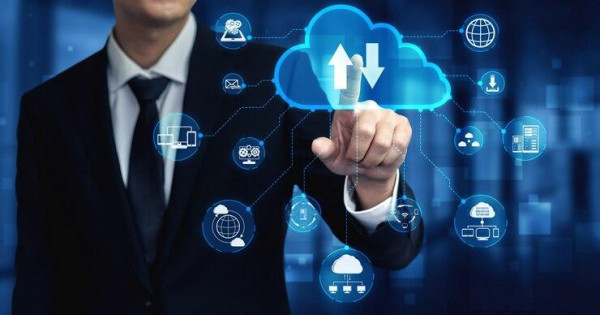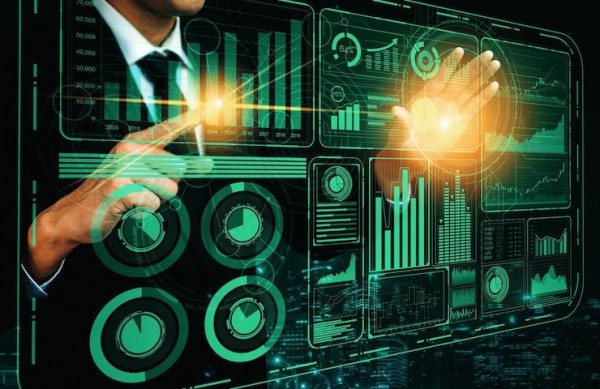Introduction
Every company tries to understand what motivates their employees and keeps them going. They are also trying to zero in on the factors that lead to higher employee engagement. In other words, employee experience is an upcoming business function focused on tracking how employees feel and think during every touchpoint of their journey from onboarding to exiting the company. In this blog, let’s learn about employee experience, emerging trends in employee experience, employee feedback, and key strategies to improve the employee experience.
Top trends in employee experience
Here are 4 top trends that are likely to impact employee experience.
- The new norm of remote work
One of the most prominent changes because of the covid-19 pandemic is the shift from office-based work to working remotely from home in companies that run their business operations primarily on computers. As per the statistics of Empuls, approximately 88% of organizations have encouraged or required that their employers work from home. Moreover, many organizations now realize the advantages of working from home as employees can spend more time with their families by saving travel time, which increases free time for employees, and reduces operational expenses. This arrangement is likely to continue even if the pandemic is eradicated either through permanent work from home or hybrid working like three days from home and two days of work from the office. - Advanced technologies to empower employees
As more and more employees have opted to work remotely, advanced technology will continue to play a key role. Today, most companies rely heavily on new and advanced technologies to gain a competitive advantage. The workforce can use these technologies to their advantage as it will help improve their productivity and reduce the workload considerably, creating a more flexible working environment. Forrester predicts that more than 30% of companies will invest in advanced technologies like cloud, networks, automation, risk management, etc. - Invest in an effective onboarding process
Creating a fruitful employee experience begins with an innovative and smooth onboarding process during the recruiting phase. Due to remote working situations, most recruits will not be able to meet their colleagues in person, have engaging conversations, team get togethers, etc. Hence the onboarding process is vital for making recruits feel welcome. It lays the foundation for a good employee experience. Employees are now introduced to their co-workers through collaborative platforms like Zoom and MS teams, and many more. - Provide opportunities to learn new skills
As per Oracle Netsuite, professional development opportunities are vital for providing a positive employee experience. Also, 22% of employees decide to leave their current organizations that don’t invest in adequate employee training as per Emplify. This means that businesses must provide opportunities for their employees to develop new skills in order to keep them motivated and engaged in multitasking.
What do employees want most from their experience in 2022?
The dynamics of today’s employee market dynamics are changing as employees have new priorities and are reinventing the why, how, and where of their working life. Some of the feedback on employee experience includes:
- The rapid rise of remote working culture is causing many employees to revamp their approach each day.
- Employees wish for their employer to prioritize their wellbeing and purpose.
- Work-life balance, flexible working conditions, and skill development are necessities for a positive employee experience.
The rise of the home office
Remote working has been gaining popularity among the global workforce for some time. A Statista survey of work-trends before Covid-19 shows a gradual increase in work from home over the past decade, which drastically spiked after the pandemic hit and will continue to be the preferred mode of work in 2022.

Wellbeing and shared culture
The dynamics of the 9-5 office routine for a desk at home have changed employee expectations. Many employees want their companies to prioritize flexibility and skill development, including the ability to choose their own start and finish times, as well as extra vacation days and entirely flexible work alternatives. Wellbeing and purpose are also main priorities, with almost half of the employees even prepared to move to a new company to improve their wellbeing.
Key initiatives to improve the employee experience through Metaverse
Talent in a company is the most crucial asset. To ensure sustained success even in the future, you must start thinking seriously about employee experiences in the same way as customer experiences. Technologies like Metaverse and AI are the ones that can enhance employee experiences out of the ordinary. A virtual space is where friends or strangers from all over the globe meet to play or interact. The same idea can be applied to co-workers with the help of Metaverse. In the Metaverse, the possibilities are never-ending of improving the landscape & bringing new tools to enhance the working experience. Some of the practical applications include:
- Recruiting & onboarding
- Employer brand positioning
- Learning
The tools already offering employee experience with Metaverse are:
- Mesh by Microsoft: As per CEO Satya Nadella, the firm is working on developing an enterprise metaverse. The gateway will be created through its Teams’ platform and comprises the latest, mixed-reality-powered platform, enabling people in various physical locations to join and enjoy collaborative and shared holographic experiences on many types of visual media in their workplace.
- Meta by Facebook: Meta wants employees to go to work virtually through Horizon Workrooms. This platform is a virtual reality (VR) workspace for different teams to connect, collaborate, create, and perform work together. In Meta, they invite you to share a table with your colleagues even if “a world separates us” and to transform your home into your preferred remote meeting room.
Conclusion
The scope of the employee experience has surpassed the boundaries of HR and is now an organization-wide initiative to create productivity, wellbeing, engagement, and growth. Business leaders must think about all the experiences that impact their employees in the workplace and their overall life. Therefore, employee experience should be looked at seriously, and proper strategies must be deployed to offer the best employee experience from onboarding to exiting.
FAQs
1. When should we gather employee feedback?
A: It relies on how you have done it in the past. To improve employee experience, the HR team and other management personnel must ask for employee feedback and insight regularly. An annual and quarterly survey on pressing topics might be the right way forward.
2. How can we get leadership to care about employee experience?
A: The best way to get the leadership group in a company involved is to share case studies and statistics that endorse the need for having a good employee experience. Use metrics to showcase how a good employee experience positively impacts the bottom line.
3. Is coaching a game-changer in employee experience?
A: Definitely. Instead of acting mechanically and supervising employees’ work, managers should transform themselves into coaches and help employees grow professionally and personally.
4. How can you measure employee experience?
A: Create a clear plan for tracking the pulse of your employee experience program. Seek feedback at every milestone. Provide surveys for each instance like onboarding, recruitment, and exit.
5. How can you choose the right employee experience platform?
A: It should be a platform that seamlessly integrates with your current facilities and infrastructure and offers the required employee experience. Eg: If you wish to improve onboarding, choose a platform that provides a seamless onboarding module or application.
6. What are the most critical components of employee experience?
A: The most critical components of employee experience are authenticity, engagement, meaning, purpose, optimism, belonging, and social connection.
7. What are the technologies for maintaining a collaborative remote work environment?
A: The technologies for maintaining a collaborative remote work environment are chatbots, virtual meeting tools, user-based network access, time tracker, etc.



